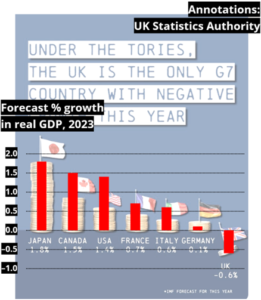Dear Dame Angela,
Thank you for your letter regarding a tweet posted by the Chancellor of the Exchequer, that was retweeted by HM Treasury on 25 April. It stated that:
“To restore our public finances, I had to take some difficult decisions last autumn. But we have made progress. By 2027-28, headline debt levels are reduced by £53.7 billion…”
Statisticians in HM Treasury have confirmed that this figure refers to the change in the Office for Budget Responsibility’s forecast for public sector net debt between the November 2022 and March 2023 fiscal events, as shown in Table A10 of its March 2023 Economic and fiscal outlook.
As you suggest, some readers of the tweet may have assumed that the Chancellor was referring to the forecast change in public sector net debt between the last full financial year and 2027-28. This shows an increase of £363 billion over these five years, although this corresponds to a reduction from 100.6 to 96.9 per cent of GDP.
Greater clarity and context would have avoided this confusion. The Office for Statistics Regulation has therefore spoken with officials at HM Treasury to emphasise the importance of consistently adopting a transparent and accessible approach to communicating statistics and data in line with our guidance on intelligent transparency.
Yours sincerely,
Sir Robert Chote
Chair
Related links
Letter from Dame Angela Eagle MP to Sir Robert Chote – national debt

